All about the Pissardi plum
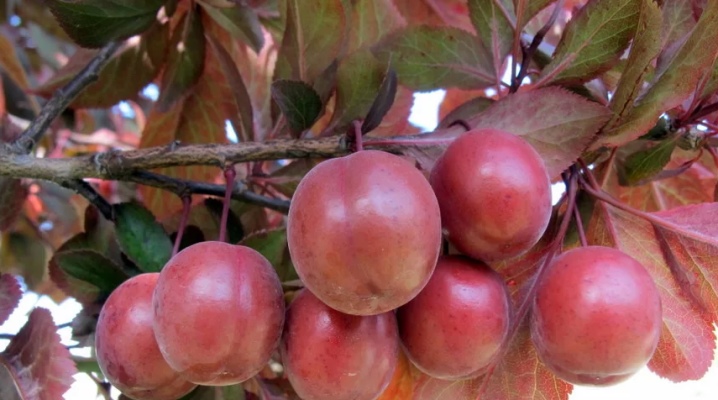
Many gardeners grow plums on their plots. There is a huge variety of varieties of this culture. Today we will talk about the main features of the Pissardi variety.
History and description
The red-leaved plum "Pissardi" was first grown in Iran. Later, the botanist A. Pissardi brought this culture to Paris, and it was there that it got its name in honor of the scientist.
Later, the spread-out Pissardi plum began to spread throughout Europe. This variety looks like an ornamental plant of a shrub type, which is grafted on a trunk. The height of an adult and healthy bush can be 5-8 meters on average. Sometimes there are specimens 11-12 meters long.
The crown of the plant is quite dense, spreading. It is formed from red stems. From above, they are covered with a dark and smooth bark. The leaf blades are elliptical in shape, their length can be on average 5-6 centimeters. Their color is red or purple; a slight metallic sheen can be observed on their surface.
The color will remain unchanged throughout the growing season. The leaves are placed on the plant alternately.
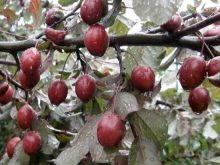
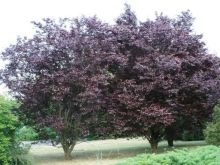
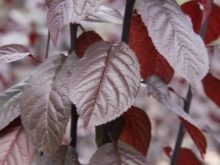
Views
There are several varieties of this red-leaved plum.
-
Early Pissardi. Such a shrub plant grows up to 6-7 m in length. Its leafiness is medium, the shoots are rather thin, their color is saturated red.
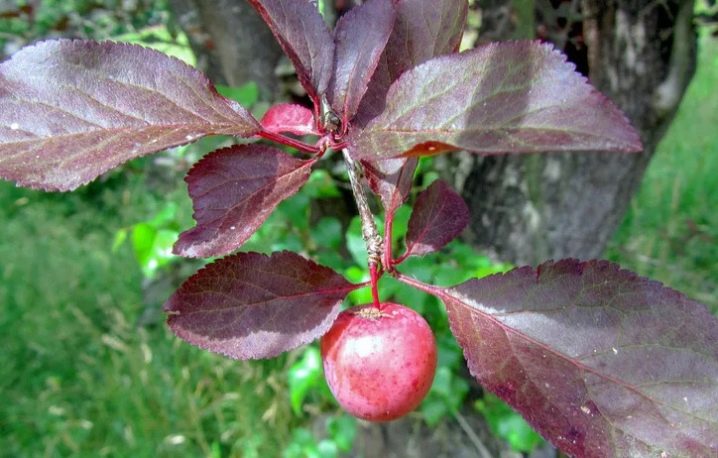
-
"Cisten". This variety is a hybrid of Pissardi and cherry. It has a relatively small size (up to two meters in height). Cistena is particularly resistant to frost, so it is permissible to plant and grow it in the northern regions.
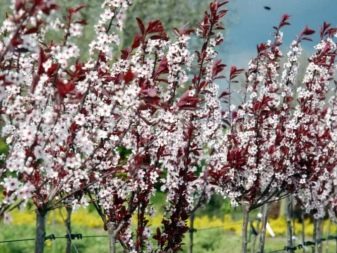
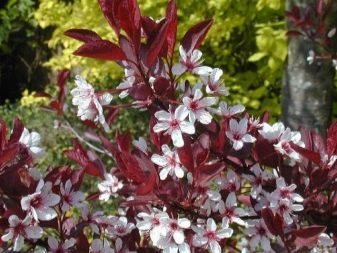
- Pissardi is dark purple. The height of this type can reach 6 meters. The variety has the least resistance to frost.
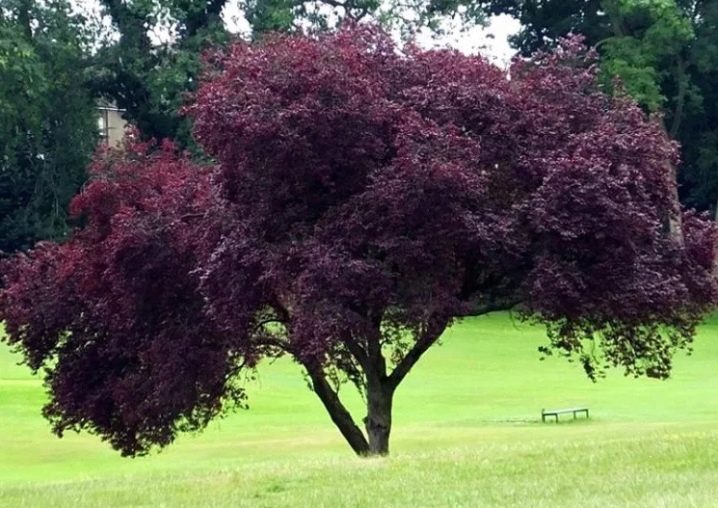
Landing
Next, we will look at how to properly plant this splayed plum. First you need to prepare the landing holes. The duration of such a procedure can vary significantly depending on the region of cultivation. So, when planting in the suburbs, pits are prepared a couple of weeks before planting.
The planting itself is recommended to be performed in the spring before the buds have time to swell. This will enable young vegetation to take root well in the soil before the onset of the cold season. Sometimes such a plum is planted in the fall, September is the optimal time. "Pissardi" will have time to adapt to the conditions of the external environment.
It is important to find the most suitable place before boarding. This plum prefers sunlit areas. The best option would be the south side. The place must be completely protected from the winds.
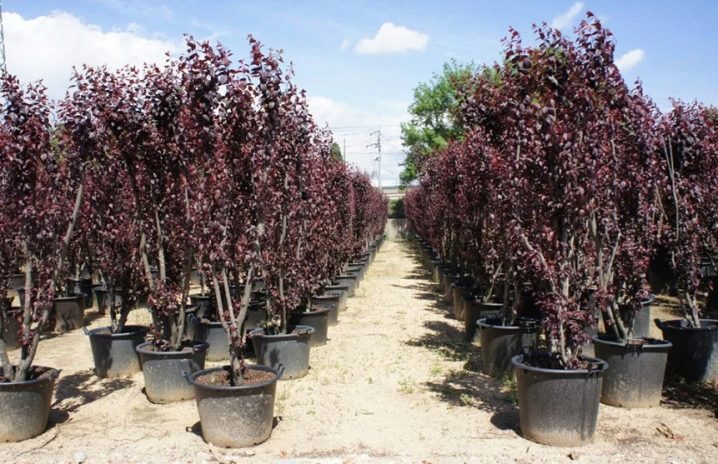
Remember that the variety reacts negatively to high humidity, so it should be planted away from groundwater. The culture will not be able to grow and develop normally if other plants are placed close to it, because it prefers space.
But at a distance of 5-6 meters from such a plum, you can plant apple trees, various berry bushes, as well as evergreens. It is categorically impossible to place raspberries and pears next to each other.
Planting holes should be 45-50 cm deep, and their diameter should reach 65-70 cm. At the bottom of each dug hole, a mixture consisting of nutrient fertilizers and earth must be laid. In this form, everything is left for 14 days.
In the central part of the holes, a stake is fixed. The culture stalk is fixed to the side of it. The root system is gently straightened. The roots should be flush with the soil. All this is lightly sprinkled with earth and compacted.
Plum seedlings are tied to stakes. The plantings are thoroughly moistened with warm water. The soil around is carefully loosened.
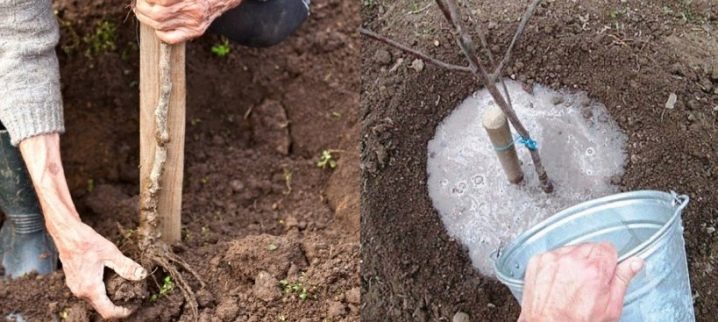
Care
Now we will look at how to properly care for such a plum.
-
Watering. Watering such a culture is necessary periodically and abundantly (1 time in 7 days). 1 tree will take about 3-5 full buckets of water.
-
Top dressing. In the first year after planting, you do not need to use fertilizers. They begin to be introduced only from season 2. It is best to use potash fertilizers in the spring, and humus in the fall. During the fruiting period, it is also worth using special fertilizers, which contain urea.
-
Ground care. It is necessary to remove all weeds around the trees in a timely manner. In addition, it is important to periodically loosen.
-
Pruning. This procedure is performed in order to form a crown, as well as to perform sanitary care. Pruning is best done during the spring season. This removes all old, dry and diseased branches.
-
Preparing for frost. Before the onset of the cold season, the vegetation is well watered, and then mulched and covered. It is best to use peat or straw as a covering material.
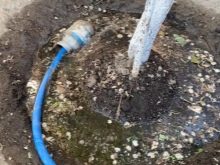
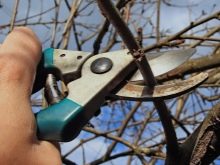
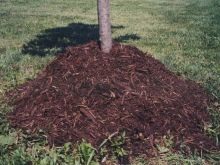
Diseases and pests
The red-leaved culture is considered quite resistant to a variety of diseases and pests. But it can still be affected by powdery mildew. Moreover, on the tree you can see a bloom of white. It can be easily wiped off by hand.
Gradually, this plaque begins to spread throughout the fruit plant. Even peduncles can turn white. Damaged flowers will begin to fall off over time. The fruits shrivel and dry up. Most often, powdery mildew appears on the drain when a high temperature is established and constant fluctuations in humidity levels.
In addition, the culture can be affected by necrosis. This damages trunks and branches. In the spring, small lesions that resemble burns can be seen on the vegetation. Over time, small ulcers will begin to form on the branches, they are filled with gum (frozen juice that protrudes on the bark). Further development of the disease will lead to the browning of the plant and its death.
When a culture is infected, all damaged parts must be immediately removed; they are also treated with disinfectants. After that, medical treatments are carried out. For this, you can use ready-made fungicides.
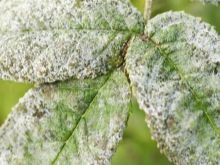
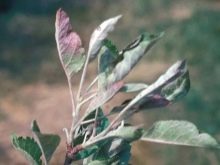

And also this plum can be affected by some pests.
-
Leaf roll. This parasite is a small butterfly, but small caterpillars of leaf rollers do more harm. They appear most often with the arrival of heat. The optimal conditions for this are an increased level of humidity and a temperature of 22-24 degrees Celsius. Cloudy and cold weather will slow down the reproduction of such pests. When leaf rollers appear on the plum, leaf blades will begin to curl, and a thin white web will also appear. Small caterpillars live in folded leaves. They can quickly destroy almost all of the green mass of plants. To get rid of pests, you can use ready-made biological and chemical preparations, including Danitol, Karbofos. If the parasites have just appeared, then alternative methods can also be used (solution with wormwood, with potato or tomato tops, with tobacco).
-
Fruit moth. This pest populates the plum with whole colonies. It quickly destroys a significant part of the green mass on fruit trees. After that, the vegetation weakens greatly and loses its resistance to diseases and other pests.To get rid of the fruit moth, it is better to immediately use ready-made biological preparations and insecticides, including Fitoverm, Agravertin, Vertimek. Beforehand, all parasites are manually removed from the plantings. If you find spider nests on the drain, then they must be immediately burned.
To avoid contamination of the plum, the appearance of various pests on it, you can periodically carry out treatments with insecticides. To protect against various rodents, it is better to pre-treat the trunks of fruit trees with whitewash.
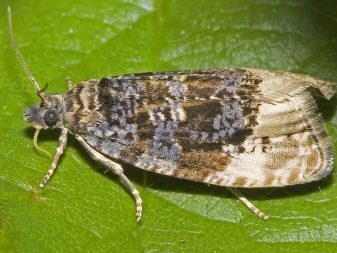
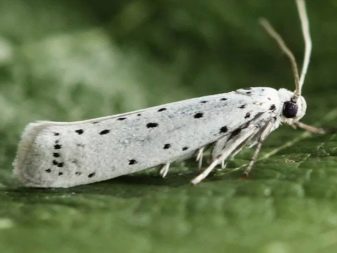
Reproduction
This plum can multiply in several ways.
Using seed
In this case, the healthiest and largest seeds are selected. They are well cleaned, soaked for several days, while regularly changing the liquid. When the seed dries up, it is mixed with wood chips or clean sand. In this form, it is stored for 6 months (the temperature should be from 0 to 10 degrees). After that, the seeds can already be planted in the soil to a depth of several centimeters. Most often this is done in the fall or spring.

With the help of overgrowth
In autumn, the root connecting the shoot with the adult plant is carefully cut down. In the spring, the resulting young seedling must be dug up and planted in another place on the site.
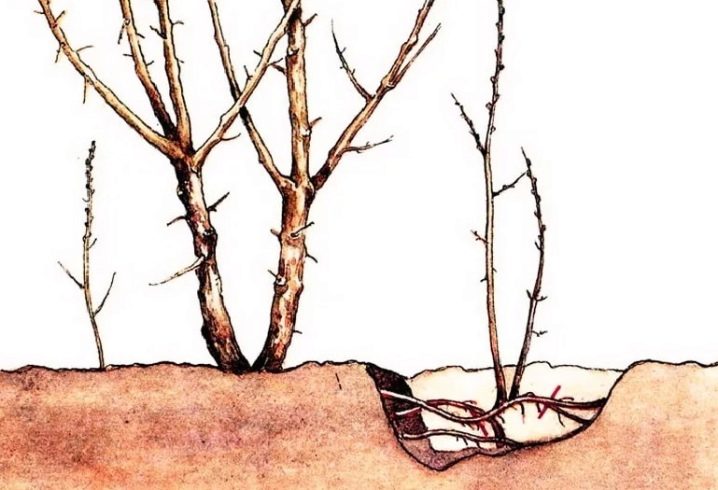
Using root cuttings
First, the roots are cut 1.5x15 cm at a distance of one meter from the young plant and 1.5 meters from the adult tree. In the fall, a site is prepared (fertilizers are applied, the earth is dug up and leveled). Then, with the onset of heat, cuttings are planted. Above ground level, several buds need to be preserved. After that, everything is watered, mulched.

Application in landscape design
This culture has excellent decorative characteristics. It will look good on almost any summer cottage. Some gardeners plant several of these trees at once in one row. If desired, they can be combined with other green plantings.
And also one large and lush tree of this type will look good against the background of tall green plantings. In this case, the red-leaved plum will become an interesting accent in landscape design.
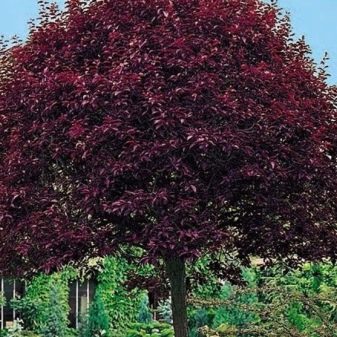
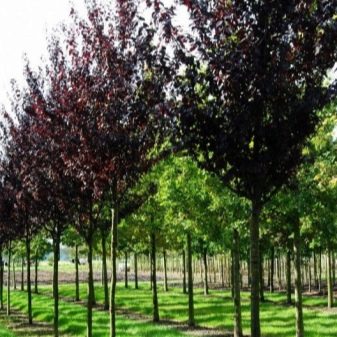











The comment was sent successfully.